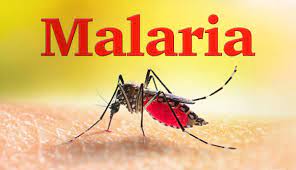LAGOS, NIGERIA – April 8, 2025 – Scientists have pinpointed regions in Nigeria where malaria and diseases caused by soil-transmitted helminths (STHs), commonly known as parasitic worms, frequently occur simultaneously, creating significant co-morbidity hotspots, a new report reveals. The study highlights the south-south and southeast regions as areas facing a particularly compounded health burden from these dual infections.
The research, published in the journal Infectious Diseases of Poverty on April 2, 2025, analysed the co-occurrence of malaria and infections from STHs including Ascaris lumbricoides (roundworm), Ancylostoma duodenale (Old World hookworm), Necator americanus (New World hookworm), and Trichuris trichiura (whipworm).
Led by Faith Eshofonie from the Federal University of Technology, Nigeria, the researchers observed notable regional differences. While the south-south and southeast showed high levels of both diseases occurring together, the northwest region surprisingly exhibited lower co-morbidity, despite having a higher overall prevalence of malaria.
These findings underscore the need for integrated disease management strategies, particularly in the southern zones. The study authors stress the importance of combining community education on hygiene practices with regular health screenings for both malaria and STH infections.
The research utilized malaria prevalence data from the Nigeria Malaria Indicators Survey (NMIS) for 2010 and 2015, alongside STH prevalence data spanning 1978-2014 from the Expanded Special Project for Elimination of Neglected Tropical Diseases (ESPEN) portal.
Analysis revealed distinct geographical patterns. Malaria prevalence was highest in the northwest and northcentral regions. Roundworm infections were widespread across both northern and southern states. Hookworm species were predominantly found causing disease in the southwest, while whipworm, though less common overall, was significant in certain areas.
Climatic factors were identified as significant influencers. Higher temperatures were found to accelerate malaria transmission by boosting parasite development within mosquitoes, but had minimal effect on STHs, where sanitation and soil conditions were more critical. Conversely, increased precipitation correlated positively with both malaria (promoting mosquito breeding) and STH infections (aiding the survival of worm eggs in the soil).
The researchers suggest the consistently lower malaria rates in southern states (compared to the northwest/northcentral) could be due to environmental factors like temperature and humidity, alongside variations in the reach and effectiveness of public health interventions. The southwest’s forested environment, heavy rainfall, and specific climate conditions may make it particularly vulnerable to STHs, reinforcing the need for improved water, sanitation, and hygiene (WASH) facilities and consistent deworming programs.
Ultimately, the study highlights the critical need for climate-aware, tailored public health interventions. The authors call for collaborative efforts that integrate environmental considerations with health initiatives to combat the dual threat of malaria and STH infections effectively, especially considering the ongoing challenges posed by climate change.
Disclaimer: This news article is based on information from a scientific study published on April 2, 2025. Disease patterns, prevalence, and health recommendations can change over time. For the most current health advice and information specific to your area, please consult with qualified healthcare professionals and local public health authorities.











